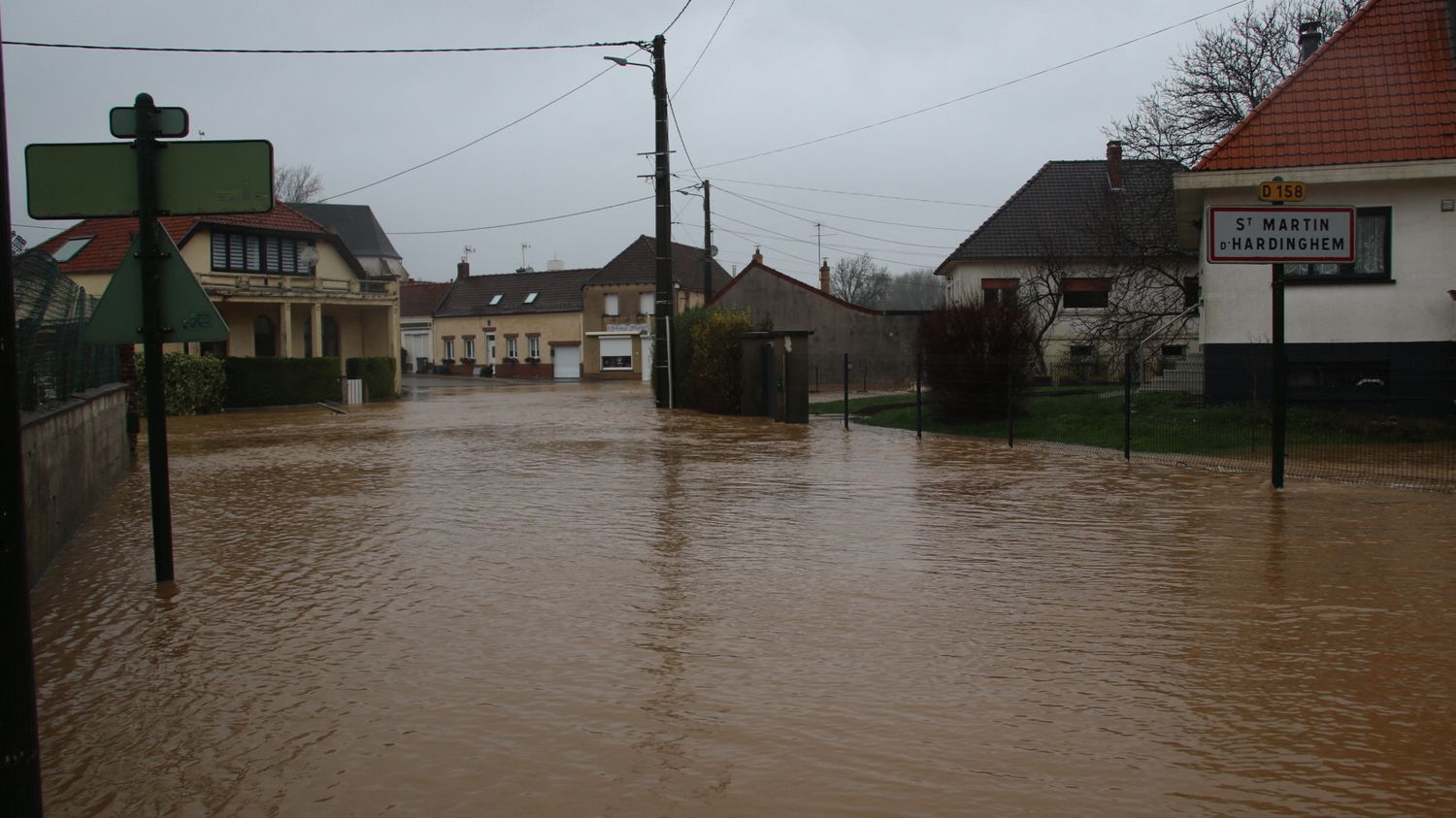The decline of the Aa, the coastal river of the department still classified red on Thursday, has begun. But, as in November, many localities still have their feet in the water.

Published
Update
Reading time: 4 min

The impression of “relive the flood” of November “fast-track”. Many residents of Pas-de-Calais are still facing significant flooding on Thursday January 4. The coastal river Aa has been classified as red by Vigicrues since Tuesday afternoon. “These are exceptional floods, rarely seen, if not never”reports to franceinfo Matthieu Sorel, climatologist at Météo-France.
According to the prefect of Pas-de-Calais, Jacques Billant, it should fall “nearly 100 mm of rain” accumulated in six days between Saturday and Thursday. “Taking a step back, since October 15, the precipitation has been 2.5 times higher than normal. It’s colossal. As soon as it rains again, the rivers start to overflow in a major way again”, specifies Matthieu Sorel. On Thursday, excesses are still expected, in particular “downstream of the section” of the Aa, alerts Vigicrues. Further rain could still “delay the current decline”. The decline in watercourses is therefore still awaited in the department, for several reasons.
Because the soils are saturated with water
The rainy episodes have followed one another since November, the soils of Pas-de-Calais are soggy. Underground, the water tables are full: “The piezometric levels measured are generally above the normal for the month of November”according to the latest data (in PDF) of the Geological and Mining Research Bureau (BRGM). On the surface, the soils are “very saturated with water”described to franceinfo Jean-Marie Coulomb, manager of Vigicrues. “It is above all the surface humidity which makes the difference. The soils are close to 100% humidity, they no longer absorb and the rain flows directly into the watercourses.” Especially since the soils in this area are clayey. Therefore, they absorb water slowly and retain it for a long time.
Because the territory is flat
Once water levels are high, the department’s lack of relief does not facilitate a rapid decline. “It’s a fairly flat area. The water flows less quickly than in mountain areas for example”, describes Jean-Marie Coulomb. The highest point of the department is in fact located at only 211 meters, in Alquines, as this small town notes on its site.
“The Aa watercourse in Audomarois (north-east of the department) is even ten meters below sea level, which hinders the evacuation of water, which flows little towards the sea North”summary Le Figaro. “At the same time, high tides can push the waters of rivers in the opposite direction to their descent: the water enters the land, instead of flowing into the sea”, also explains the daily. Jean-Marie Coulomb therefore concludes: “Once you are in a crisis situation, it lasts.”
Because the department is struggling to adapt
Precipitation is set to intensify, under the impact of global warming. “Across France, annual precipitation (…) is characterized by a clear disparity with an increase over a large northern half (especially the northeast quarter) and a decrease in the south”, explains Météo-France. An increase which is already being felt: the meteorological service specifies to France Télévisions that according to “annual accumulations at the department level, this is the second rainiest year (archive beginning in 1959), with 1,126 mm, practically tied with the 1,127 mm of the year 2000. This represents a surplus of 25% compared to the 1991-2020 averages.”
“We are experiencing increasingly significant floods, which are breaking height records and each time exceeding known data. We are having more and more interventions, with more and more damage”, explains to franceinfo Adam Beernaert, director general of civil protection in Pas-de-Calais. To cope with this, some voices deplore the unsuitability of the territory. It is equipped with a “network of canals and locks, called wateringues”reminds TF1 Info, namely “1,500 km of ditches and canals, which [permettent] in theory to keep the land dry”.
But this network is deteriorating, according to Allan Turpin, mayor of Andres and president of the Stop Floods Pas-de-Calais association. “Some stations are around forty years old. Sections have been decommissioned and are no longer maintained, without consultation with the municipality. We are left to our own devices”he denounces to franceinfo, recalling that promises of work had been made after the floods of 2006, but that he did not “still haven’t seen the first shovel”. He therefore asks for means to improve pumping, strengthening the banks or even cleaning, where necessary.
The elected official also criticizes the waterproofing of soils in the department: “The territory has been urbanized where it should not be. Sectors should never have been built.” Faced with these challenges, climatologist Matthieu Sorel invites the department to evolve: “During the winter period, we expect more precipitation, which is what we are currently observing. It must adapt to these new weather conditions.”
